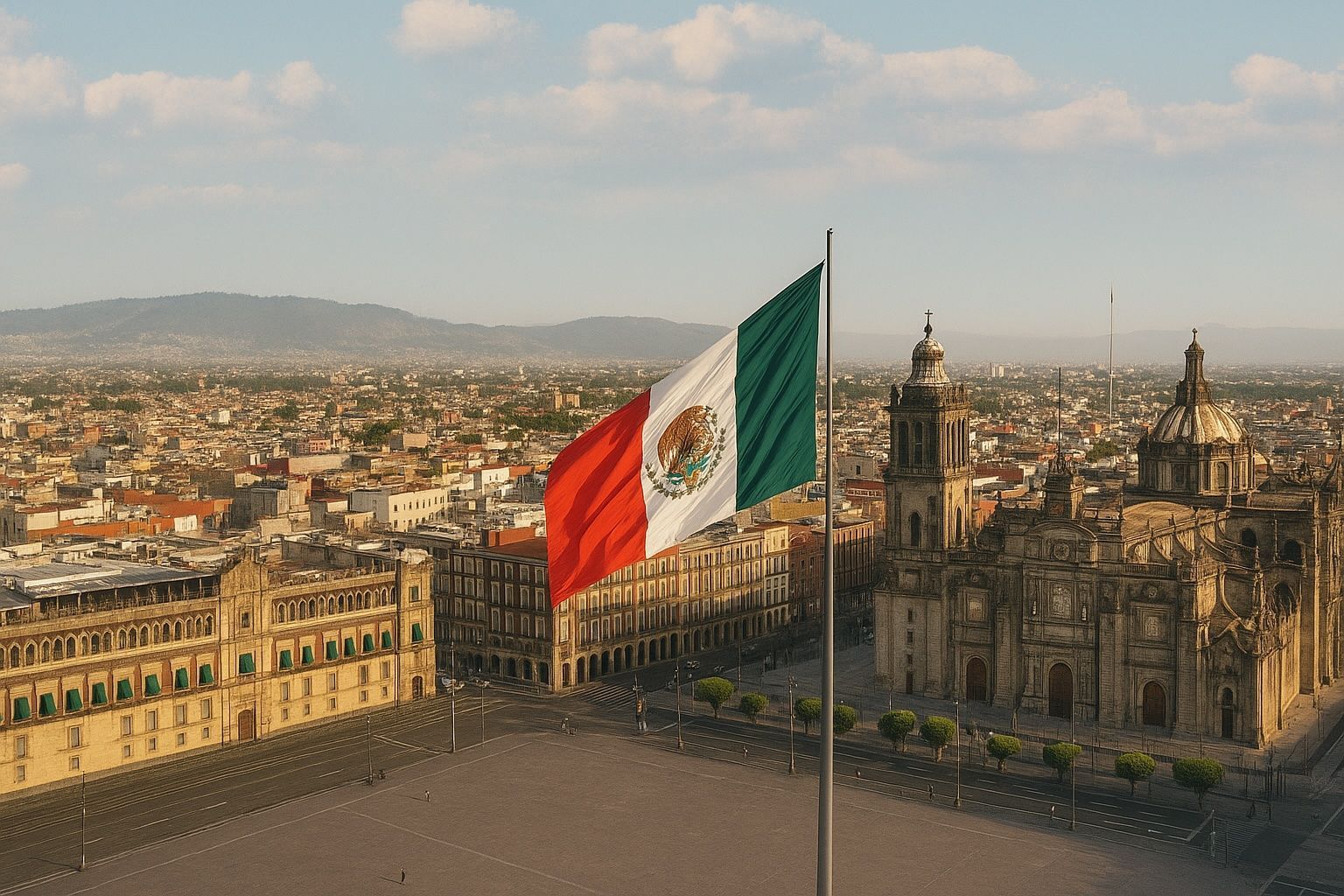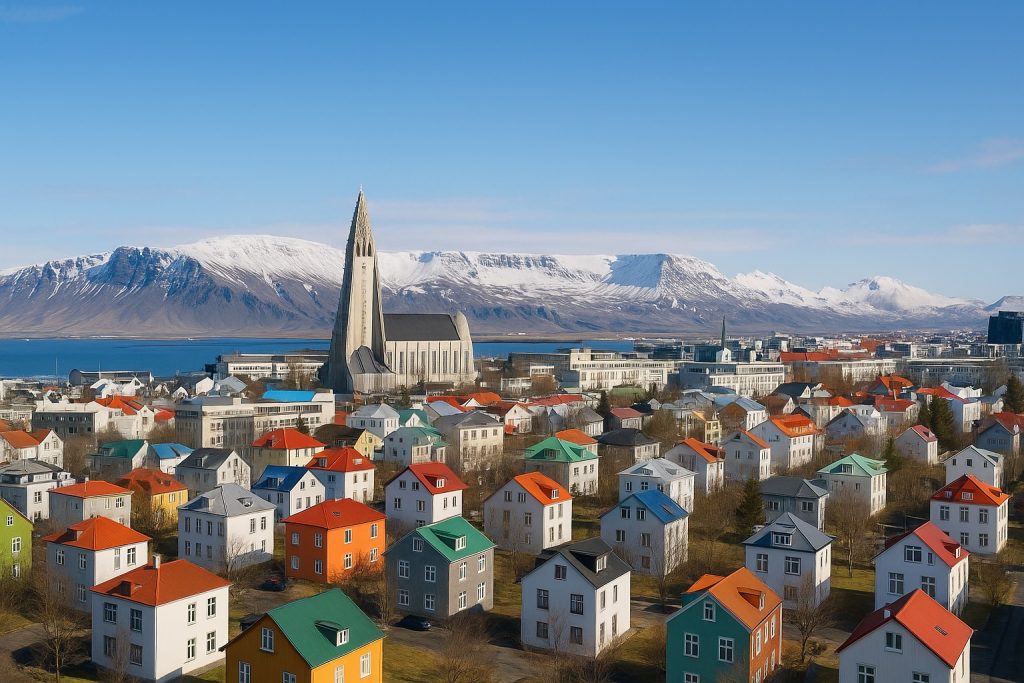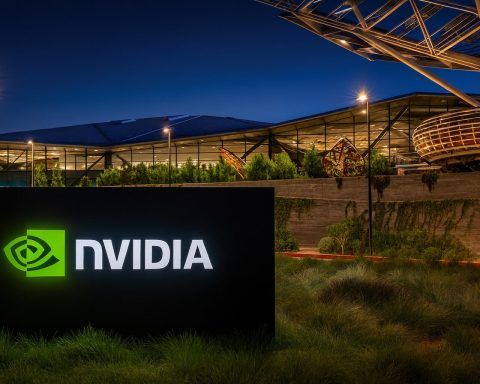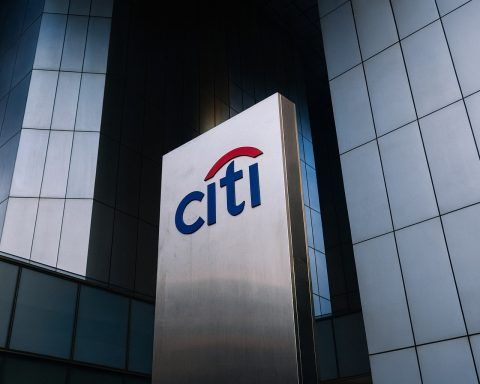- As of early 2024, Mexico had over 107 million internet users, about 83% of the population.
- Fixed broadband is increasingly fiber-based, with around 70% of fixed connections using fiber (FTTH) and Telmex migrating about 85% of its broadband customers from DSL to fiber.
- Red Compartida, launched in 2018 by Altán Redes, reached 95.3% of the population by June 2024, exceeding its 92.2% target.
- CFE TEIT started in 2022 and had installed 91,000 free Wi‑Fi access points nationwide by early 2024.
- Mexico’s mobile market reached 125.4 million active mobile lines by early 2024, about 97% of the population.
- 5G rollout progressed with Telcel launching 5G in February 2022 and surpassing 10 million 5G users across 125 cities by April 2024.
- Mexico City built one of the world’s largest public Wi‑Fi networks, with over 21,500 hotspots achieving a 2022 world record.
- As of 2024, median fixed broadband speed is about 79–80 Mbps and mobile median speed about 30–33 Mbps.
- Mobile data price fell from about $15 per GB in 2019 to roughly $2.03 per GB in 2023, while average fixed broadband prices hovered around $32.35 per month in 2024.
- Starlink’s low‑Earth orbit service rolled out nationwide by 2022–2023, and in November 2023 the government awarded Starlink a MX$1.6 billion (US$89.8 million) contract to provide free internet in under‑connected areas through 2026.
Introduction:
Internet access in Mexico has expanded dramatically in recent years, reaching over 107 million users (83% of the population) by early 2024 [1]. The country has invested heavily in both ground-based infrastructure (fiber-optic networks, mobile broadband) and emerging satellite services (“sky”) to connect its people. Yet a significant digital divide remains between well-served urban areas and underserved rural communities. This report provides a comprehensive overview of Mexico’s internet landscape as of 2025 – covering infrastructure developments, the urban–rural gap, key service providers, typical speeds and pricing, the rise of satellite internet, and the challenges and opportunities ahead. All data are the latest available, with sources including Mexico’s telecom regulator (IFT), government reports, and industry analyses.
1. Infrastructure: Broadband Networks and Initiatives
Fixed Broadband (Ground Networks): Mexico’s fixed broadband infrastructure has modernized rapidly, shifting from legacy DSL and cable toward high-speed fiber-optic networks. As of 2024, fiber-to-the-home (FTTH) has become the dominant fixed access technology – an estimated 70% of fixed internet connections use fiber [2] [3]. The incumbent operator Telmex (América Móvil) has upgraded the bulk of its old copper DSL lines to fiber; about 85% of Telmex’s broadband customers have been migrated to fiber [4]. Newer entrants like Totalplay have 100% fiber networks, offering gigabit speeds, and cable operators (Izzi and Megacable) have upgraded hybrid fiber-coax networks to increase capacity [5] [6]. These investments have boosted fixed broadband quality and coverage, with over 71% of Mexican households now having internet access at home [7] [8] (up from ~21% in 2013 [9]).
- Government Broadband Initiatives: The Mexican government has promoted connectivity through programs and public investment. The landmark 2013 Telecommunications Reform opened up competition and created the independent regulator IFT, spurring infrastructure growth [10]. A cornerstone project from the reform is the Red Compartida (Shared Network), a wholesale 4G LTE network launched in 2018 by consortium Altán Redes. Red Compartida operates in the 700 MHz band to extend coverage; by June 2024 it reached 95.3% of the population, exceeding its 92.2% target [11]. This wholesale network allows any carrier or virtual operator to use its infrastructure, facilitating rural expansion. In parallel, the state-owned power utility’s telecom arm – CFE Telecomunicaciones “Internet para Todos” (CFE TEIT) – launched in 2022 with a mandate to provide affordable internet in remote areas [12] [13]. CFE TEIT acts as a Mobile Virtual Network Operator (MVNO) riding on other networks (including Altán’s), and by early 2024 it had installed 91,000 free Wi-Fi access points in public spaces nationwide [14] [15]. Through its “Internet para el Bienestar” plans, Mexicans in underserved areas can get mobile data packages for as low as MX$50 (US$2.88) per week (3 GB) or MX$230 (~US$13) per month (40 GB) [16] [17] – significantly improving affordability for low-income users.
Mobile Networks: Mexico’s mobile broadband infrastructure covers the vast majority of the population, primarily via 4G LTE networks. By late 2023 there were 121+ million mobile internet subscriptions – roughly one per person [18] [19]. 4G is now ubiquitous in urban areas and many rural areas, carrying 83% of all mobile data traffic as of 2023 [20] [21]. Major operators Telcel (América Móvil) and AT&T México have invested in expanding 4G coverage, while Movistar (Telefónica) opted to rent capacity (it signed network-sharing agreements instead of building out 4G in some regions). 3G networks still provide fallback in remote zones, and older 2G networks are being phased out (which raises concern for some communities reliant on basic phones [22]).
- 5G Rollout: Mexico has emerged as a regional leader in 5G deployment, although adoption is still in early stages. Telcel launched 5G in February 2022 and by April 2024 had over 10 million 5G users across 125 cities [23] [24]. AT&T introduced 5G in late 2022, reaching 47 cities by end of 2023 [25] [26]. However, 5G connections remain a small fraction of total mobile lines. Rollout has been slowed by high spectrum costs and taxes (Mexico’s spectrum fees are among the highest in the Americas [27]), and limited mid-band spectrum availability [28]. A spectrum auction for 5G (mid-band frequencies) is expected in 2025 [29], which could accelerate expansion. Despite these hurdles, ongoing investments mean 5G coverage is steadily growing in major urban centers.
- Public Wi-Fi and Civic Initiatives: In addition to commercial networks, there have been notable efforts to expand free connectivity. Mexico City built one of the world’s largest public Wi-Fi networks, with over 21,500 hotspots (achieving a world record in 2022) under a digital innovation program [30] [31]. This model of providing free internet in public squares, transport stations, and schools is being replicated in other regions through federal programs and local initiatives. Such efforts complement cellular and fixed networks, ensuring more people can get online, at least in communal spaces.
2. Urban vs. Rural Divide
A persistent urban–rural gap characterizes internet access in Mexico, though it has narrowed in recent years. As of 2023, 85.5% of people in urban areas (ages 6+) used the internet, versus only 66.0% in rural areas [32]. This 19.5 percentage-point gap, while still significant, is much smaller than the 32-point gap recorded in 2017 [33] [34]. In other words, rural internet usage has more than doubled since 2017, reducing the digital divide by one-third [35] [36]. Key factors in this improvement include the expansion of mobile coverage into rural communities and targeted programs to connect remote areas.
- Coverage Gaps: The remaining unconnected population is concentrated in poor and remote regions, particularly in the south. For example, relatively urbanized states like Quintana Roo and Baja California boast over 90% internet penetration, while poorer, mountainous states like Oaxaca (70.6%) and Chiapas (59.9%) lag far behind [37]. Many rural villages still lack fiber or cable infrastructure, and even cellular signals can be weak or absent in remote pockets (despite population coverage above 95%, geographic coverage is lower in rugged terrain).
- Socioeconomic Disparities: The digital divide also mirrors income inequality. Only 39.5% of households in the lowest socioeconomic bracket have internet access, compared to 93.5% among the highest bracket [38] [39]. Cost is a barrier: in a 2023 survey, 43.5% of lower-income Mexicans without a cellphone cited affordability as the reason they did not own one [40]. While device and data prices have fallen (see Section 4), the poorest communities continue to be underserved, often correlating with rural or indigenous populations.
- Bridging Efforts: Several initiatives aim to close the urban–rural gap. The Red Compartida wholesale mobile network explicitly targets coverage in rural zones by allowing any operator (including small regional ISPs or community networks) to offer service without huge infrastructure investments [41]. The government’s “Programa de Cobertura Social” identifies “connectivity gaps” – thousands of localities with no telecom service – to prioritize for expansion or subsidies [42]. CFE Internet para Todos (TEIT), as noted, is installing free Wi-Fi and selling low-cost data in villages, often by leveraging satellite backhaul or Altán’s network [43] [44]. Additionally, local grassroots projects have emerged: for example, an indigenous cooperative in Puebla launched “Wiki Katat” in 2022, an affordable community-run mobile network using Altán’s infrastructure [45] [46]. Such efforts, alongside the private sector’s network expansions, have steadily chipped away at the digital divide.
Despite progress, millions of Mexicans remain on the wrong side of the digital divide [47]. The final stretch – connecting the most isolated 10–15% of the population – presents the toughest logistical and economic challenges. This is where satellite technology (“sky”) and innovative public-private partnerships are increasingly playing a role (see Section 5 on Satellite Internet).
3. Key Providers and Market Landscape
Mexico’s internet service market is served by a mix of former monopolies, new fiber entrants, cable companies, mobile network operators, and a growing array of virtual operators. Below is an overview of the major providers in both fixed broadband and mobile segments:
Fixed Broadband Providers: As of late 2024, about 27–28 million Mexican households have a fixed internet subscription (roughly 70% of total households). The market is dominated by four players (see Table 1), with the remainder split among a few regional ISPs and local cooperatives:
- Telmex (owned by América Móvil): The historical telephone incumbent remains the largest fixed broadband provider, with about 11.2 million subscribers (≈40% market share as of Q4 2024) [48] [49]. Telmex offers DSL and fiber under the “Infinitum” brand. After years of losing share to rivals, Telmex is now aggressively investing in fiber upgrades and has frozen its prices to win back customers [50] [51]. Its sister company Telnor operates in Baja California/northern regions, but together they are reported under Telmex figures.
- Grupo Televisa (Izzi Telecom): Televisa’s telecom division (which operates Izzi, Cablevisión, Cablemás, etc.) is the second-largest fixed broadband player, with roughly 5.7–6 million subscriptions (~20–22% share) [52]. Izzi primarily provides cable modem service (DOCSIS 3.1 over HFC networks) in dozens of cities, and is expanding fiber in new housing developments. Televisa also offers satellite broadband in rural areas via its Sky subsidiary (in partnership with HughesNet), though Sky’s internet base is under 400,000 [53]. Note: In 2022, Televisa attempted a merger with Megacable to solidify its position, but negotiations fell through, leaving Izzi to compete independently.
- Megacable: A major cable operator based in Guadalajara, Megacable has grown rapidly and now roughly rivals Televisa in broadband scale. By Q4 2024 Megacable reached 5.31 million internet subscribers (≈19% share) [54], after ~12% growth that year. It operates in 26 states, often as the leading provider in mid-sized cities. Megacable’s network is HFC (cable) with ongoing fiber deployments. The company has been a market “underdog” that, according to financial analyses, achieved the highest subscriber growth among ISPs in recent years [55]. Its strong performance (along with Totalplay’s rise) has put competitive pressure on Telmex and Izzi.
- Totalplay: A newcomer (launched in 2010 by Grupo Salinas), Totalplay is a pure fiber-to-the-home provider and has been the fastest-growing ISP. In mid-2024 Totalplay surpassed 5 million broadband subscribers [56](~18% share), and it continues to expand fiber coverage in dozens of cities. Totalplay’s strategy of offering very high speeds (up to 1.2 Gbps plans) [57] [58] and bundling IPTV has earned it awards – Ookla named Totalplay the “fastest fixed network in Mexico” in 2022 and 2023 based on Speedtest results [59] [60]. Totalplay’s rise from a 9% market share in 2017 to ~18% now reflects consumers’ appetite for fiber and the competitive shake-up in the fixed sector [61] [62].
- Others: Only a small fraction (~5%) of fixed lines are with other providers. These include Axtel (which sold most of its residential base to Izzi and Megacable in 2019 and now focuses on enterprise services), regional cable ISPs (e.g. Telefónica’s FTTH in some locales, local cooperatives), and community networks in rural areas. The government’s CFE TEIT is also entering the fixed broadband space in rural towns by providing Wi-Fi hotspots and last-mile connections, but it generally partners with the big four for backhaul or spectrum rather than laying its own cables [63] [64].
Table 1: Major Fixed Broadband ISPs in Mexico (Q4 2024)
| Provider | Technology | Subscribers (approx) | Market Share |
|---|---|---|---|
| Telmex/Telnor(América Móvil) | DSL / FTTH | ~11.2 million [65] | ~40% [66] |
| Grupo Televisa (Izzi + subsidiaries) | Cable (HFC) | ~5.7 million [67] | ~20–22% [68] |
| Megacable | Cable (HFC) / FTTH | ~5.3 million [69] | ~19% [70] |
| Totalplay (Grupo Salinas) | 100% FTTH | ~5.0 million [71] | ~18% [72] |
| Others (Axtel, etc.) | DSL, Fiber, etc. | < 1 million (combined) | ~5% |
Sources: IFT data compiled in news reports [73] [74] [75].
Mobile Network Operators (MNOs): Mexico’s mobile market is highly concentrated, historically dominated by Telcel. However, competitive dynamics have shifted slightly with AT&T’s entry and a boom in MVNOs. By early 2024 there were 125.4 million active mobile lines (97% of population) [76], indicating near-saturation. The major operators are:
- Telcel (América Móvil): Telcel is the overwhelming leader in mobile, carrying the majority of subscriptions and traffic. As of mid-2024, Telcel accounts for roughly 57% of mobile connections [77] [78] (around 70–80 million customers). It has the most extensive network, covering over 95% of population with 4G, and enjoys a strong reputation for coverage and reliability. Telcel’s market share, while lower than the ~70% it held a decade ago, is still so large that regulators imposed asymmetric measures (e.g. zero call termination fees for competitors) since 2014 to curb its dominance [79] [80]. Telcel has also led in 5G rollout (first to launch, with millions of 5G users as noted above).
- AT&T Mexico: The second-largest mobile operator, AT&T entered Mexico in 2015 by acquiring Iusacell and Nextel. It has since invested >US$7 billion in network upgrades. AT&T’s market share is roughly 15% (by subscriptions) [81], with an estimated 18–20 million users. Its 4G network reaches ~90% of the population and it has focused on high-value urban customers and IoT/enterprise services. AT&T has been gaining some ground, but still trails Telcel considerably. Notably, AT&T provides the underlying network for many MVNOs and for Movistar’s leased capacity in some regions, effectively making it a wholesale provider as well.
- Movistar (Telefónica México): Movistar was once the No.2 operator, but in recent years it downsized its operations. In 2019 Telefónica decided to stop investing in infrastructure and struck deals to use AT&T’s and Telcel’s networks for national coverage. As a result, Movistar’s market share has slipped to around 15% (on par with AT&T at ~15% of lines) [82] [83]. It still has a sizable subscriber base (perhaps ~18 million), especially in prepaid segments, but much of its traffic rides on other networks. Movistar’s strategic retreat opened space for AT&T and MVNOs to capture more customers.
- Mobile Virtual Network Operators (MVNOs): In the past five years, MVNOs have flourished, offering niche plans and cheaper rates by piggybacking on the networks of Telcel, AT&T, or Altán-Red Compartida. By late 2024 MVNOs collectively approached 15% of the mobile market in Mexico [84] [85]– a remarkably high share by global standards. Over 100 MVNO brands exist, but the standout is “Bait” by Walmart Mexico, which has seen explosive growth. Bait (which uses the Altán network) reached an 11.9% market share on its own by Q3 2024 [86], with aggressive unlimited data offers attracting millions of users. Other MVNOs include OXXO’s “OUI,” FreedomPop, Virgin Mobile, and niche players targeting migrant communities, IoT devices, etc. The MVNO surge reflects consumers seeking low-cost alternatives and the ease of number portability – in 2024, MVNOs led all carriers in net line additions through number transfers [87] [88].
Overall, América Móvil (Telcel/Telmex) still towers over the telecom landscape (e.g. controlling ~70% of telecom revenues [89]). But competition is more vibrant than a decade ago: cable and fiber ISPs have whittled Telmex’s fixed-line share from ~70% to ~40% [90] [91], and in mobile a combination of AT&T and dozens of MVNOs are slowly eroding Telcel’s dominance. The regulatory regime after 2013 encouraged this competition – although, as discussed later, recent policy changes could impact the competitive environment (see Section 6).
4. Speeds and Pricing: Quality of Service and Affordability
Internet Speeds: Users in Mexico have seen substantial improvements in internet speeds. As of 2024, the median fixed broadband download speed is around 79–80 Mbps [92] [93], more than double the median just a few years ago (it was ~33 Mbps in 2017 [94] and ~60 Mbps in early 2023 [95]). This jump is largely due to fiber deployment and upgrades by major ISPs. For mobile, the median download speed is around 30–33 Mbps on 4G/5G networks [96] [97]. Upload speeds are lower – median uploads ~8–10 Mbps on fixed [98] and a few Mbps on mobile – but improving.
- In global rankings, Mexico’s speeds are still moderate: it placed 84th of 181 countries for fixed broadband and 90th of 147 for mobile in Speedtest’s index (May 2024) [99]. Within Latin America, Mexico’s fixed speeds are middling (behind Chile or Brazil, for example, but ahead of many others) [100] [101]. Notably, Totalplay’s all-fiber network has driven up peak speeds – it offers premium plans up to 1.2 Gbps [102] [103]. However, many fixed subscribers (especially on cable or DSL) still use plans in the 20–100 Mbps range, which brings down the median. On mobile, Telcel’s 5G can deliver 100–300 Mbps in ideal conditions, but 5G coverage is limited; typical 4G speeds range 20–50 Mbps in cities and lower in rural areas. Latency on fixed broadband is low (~10–20 ms) while mobile latency averages ~30 ms on 4G and <10 ms on 5G, except in rural areas where backhaul constraints can add delay.
- Regional Variations: Internet speeds vary by region. Urban centers like Mexico City, Monterrey or Guadalajara enjoy the fastest broadband – gigabit fiber is often available and multiple ISPs compete. In contrast, many rural towns still rely on older tech: some have only DSL at a few Mbps, or 4G mobile broadband that might deliver 5–10 Mbps if signal is weak. According to government data, as of 2023 only 37% of rural households had a computer(vs 63% in urban) [104] [105], so many rural users access internet only through smartphones on mobile networks, which can limit the speed and quality of their experience.
Pricing and Affordability: The cost of internet service in Mexico has been a barrier for low-income users, but prices have been trending downward and becoming more competitive:
- Mobile Data Pricing: Mobile data has become much cheaper. In 2019, 1 GB of mobile data cost on average $15 USD; by 2023 this fell to $2.03 USD per GB [106] [107], a nearly 87% drop. This is partly due to competition (especially the proliferation of unlimited and social-media packages from new operators and MVNOs) and partly due to regulatory pressure on Telcel to lower rates. However, at ~$2/GB, Mexico still had pricier mobile data than many Latin American countries in 2023 [108]. For perspective, 1 GB in India costs under $0.50, in Brazil about $1, so Mexico’s data pricing, while improved, was not the cheapest regionally. Many Mexicans use prepaid plans; a typical prepaid bundle might offer 3 GB for MX$50 (as with CFE TEIT’s plan) [109], or ~10 GB for MX$100–150, often with unlimited WhatsApp and Facebook thrown in.
- Fixed Broadband Pricing: Home broadband prices vary by speed and provider, but the average cost of a fixed-line broadband package was about $32.35 USD per month in 2024 [110] [111]. Basic plans (e.g. 20–50 Mbps DSL or cable) can cost around MX$350–$500 (≈$20–$30) monthly. Higher-speed plans (100–500 Mbps) range from MX$600–$800 ($35–$45), and gigabit fiber packages from Totalplay or Telmex Infinitum can be MX$1,000+ (~$60). Telmex has notably pledged not to raise its Infinitum broadband prices through 2025 [112], keeping a 100 Mbps plan around MX$499 ($28) which undercuts some cable rivals. Bundling is common – many consumers get internet/TV/phone bundles from cablecos, which can be cost-effective. Despite these prices seeming reasonable in USD terms, affordability remains an issue for many: Mexico’s GDP per capita is around $10,000, and for low-wage families even $20/month is a strain. Indeed, as noted, only 40% of the poorest households have internet, indicating that cost (along with lack of infrastructure or devices) excludes a segment of the population [113] [114].
- Value and Quality: Consumers have benefitted from better value over time – more megabits and data for the peso. For example, Cable TV operators often throw in a 20–30 Mbps internet line at marginal cost to retain pay-TV subscribers. MVNOs like Bait introduced truly unlimited mobile data plans for ~MX$300 ($17) a month, forcing the big carriers to increase data caps. Meanwhile, the government’s free Wi-Fi hotspots give many people at least some internet access without cost (though quality can be variable). According to the Alliance for Affordable Internet, for internet to be “affordable” it should cost <2% of monthly income for 1.5 GB. Mexico still struggles to meet that target for its minimum-wage earners, but the trajectory is improving.
Overall Quality: In summary, internet service quality in Mexico has improved significantly in the past five years – speeds are up (fixed broadband +20% YoY in 2023 [115], mobile +4.4% YoY [116]), and prices per GB are down. There remain concerns about service reliability in some areas; for instance, copper theft and vandalism by organized crime occasionally disrupt networks in certain states [117] [118]. Additionally, customer service and outages remain points of complaint, especially with the cable ISPs. But on the whole, Mexico’s internet users are getting faster and relatively more affordable service than ever before.
5. Satellite Internet: Connecting by “Sky”
Given Mexico’s challenging geography and the cost of extending ground networks to every community, satellite internethas become an important piece of the connectivity puzzle – the “sky” element. Mexico has a long history with satellite communications (the government operated the Solidaridad and Morelos satellites for telephony/TV in remote areas), but broadband internet via satellite only took off in the past decade with private providers. There are two main types of satellite internet in Mexico:
- Geostationary (GEO) Satellite Services: Traditional high-orbit satellites like those from HughesNet and Viasathave been available across Mexico since around 2016–2018. These services can reach virtually any location in the country (even the most remote village) but come with limitations: relatively low speeds, high latency (~600–700 ms), and data caps. For example, in Q3 2021 Viasat’s median download speed in Mexico was 14.9 Mbps, and HughesNet’s was 10.6 Mbps, with upload speeds ~2–3 Mbps [119] [120]. Latency for both was over 600 ms (vs ~12 ms on fixed broadband) [121] [122]. These legacy satellite plans often cap users at 20–50 GB per month before throttling. Pricing for HughesNet/Viasat ranges roughly from MX$1,000–$2,000 ($55–$110) per month for various data packages, plus equipment costs. They have been a lifeline for remote businesses, ranches, and schools where no other internet exists, but the user experience (especially for real-time applications) is far inferior to terrestrial broadband. As of early 2020s, HughesNet had tens of thousands of subscribers in Mexico, often via government connectivity programs, but their growth has stalled since the arrival of newer technology.
- Low-Earth Orbit (LEO) Satellite – Starlink: The game-changer in recent years is Starlink, Elon Musk/SpaceX’s low-earth orbit satellite internet service. Starlink was approved by Mexican regulators in mid-2021 [123] and began offering beta service in 2022. By late 2022/early 2023, Starlink rolled out commercially across virtually all of Mexico (the Starlink availability map shows full national coverage). Unlike GEO satellites, Starlink’s constellation of thousands of low-flying satellites delivers high bandwidth (50–200 Mbps) and low latency (~20–50 ms) internet [124], comparable to DSL/fiber performance. This has been transformative for rural users: activities like video calls, streaming, and cloud applications – previously impractical on older satellite service – are now feasible in remote Mexican villages via Starlink.– Adoption and Impact: Starlink’s exact subscriber count in Mexico isn’t public, but adoption is growing among both individuals and government programs. In early 2023, Globalsat (a satellite ISP) partnered with Starlink and CFE to install 1,100 free Starlink-powered Wi-Fi hotspots in remote communities, aiming to serve ~550,000 people [125] [126]. In November 2023, the Mexican government went further, announcing an MX$1.6 billion (US$89.8M) contract with Starlink to provide free internet in under-connected areas through 2026 [127]. This makes Starlink one of 10 telecom operators working with the “Internet para Todos” initiative [128]. Such programs suggest the government sees LEO satellite as an efficient way to reach the last pockets of the population. For individual rural households or businesses that can afford it, Starlink is also attractive: it has no data caps and delivers urban-quality speeds where even cell signals might be absent (e.g. remote farms, islands, mountains).– Cost of Starlink: Recognizing the need to adapt to local economies, Starlink has adjusted its pricing in Mexico. As of April 2025, Starlink offers two residential plans [129] [130]:
- Starlink Residential Lite: MX$800/month (~US$45) for unlimited data at a slightly reduced throughput – suitable for basic use.
- Starlink Residential (Standard): MX$1,045/month (~US$60) for unlimited data at the highest speeds available.
Both plans require the Starlink hardware kit. Initially the kit cost MX$10,000 (US$500), then MX$4,999, but in 2025 Starlink halved the hardware price to MX$2,500 (~US$140) [131] [132] for the standard “mini” kit. This price drop significantly lowers the upfront barrier for rural customers. While $45–$60/month is still expensive by Mexican income standards, it is often shared by a community or family(e.g. a single Starlink dish feeding a village Wi-Fi network or several homes), making it more affordable per user. And compared to the slow GEO satellite plans that cost a similar $50+, Starlink’s value proposition (much faster, uncapped data) is compelling.
- Other Satellite Players: Besides Starlink, a few other satellite projects are of note:
- OneWeb: Another LEO satellite constellation (UK-based) that as of 2024 is nearing global coverage. The Mexican government has expressed interest in LEO solutions; OneWeb could be a competitor or complement to Starlink for enterprise or government backhaul, though it hasn’t launched service in Mexico yet.
- Hispasat/Sencinet: The Spanish satellite operator Hispasat (through its partner Sencinet) provides broadband links to remote public sites in Mexico. In 2022, Hispasat signed an agreement with CFE TEIT to connect 60+ remote communities’ schools, health centers and public areas via satellite [133] [134]. This is a targeted deployment using satellites to serve community Wi-Fi spots where terrestrial links don’t reach.
- Viasat (ViaSat-3): Viasat launched a new high-capacity satellite in 2023 (ViaSat-3 Americas) which could boost available speeds in Mexico and possibly offer improved plans (100+ Mbps). However, the full service ramp-up has been slow, and Starlink’s head start means Viasat faces an uphill battle in the residential market.
Impact on Rural Access: Satellite internet, especially Starlink, is helping shrink the digital divide by delivering connectivity to places that were previously offline. For isolated communities in Baja California desert or Chiapas mountains, a single satellite dish can now light up a village school or enable local businesses to access e-commerce. Satellite is also used for disaster recovery – e.g. after hurricanes in coastal areas, authorities used Starlink terminals to restore communications. That said, satellite is not a panacea: high costs and the need for power and technical setup mean it’s not yet suitable for the poorest communities without subsidy. Additionally, satellite doesn’t solve last-mile issues within communities (Wi-Fi distribution, device availability, digital skills training are still needed). Nonetheless, the “sky” approach has greatly complemented ground networks in Mexico’s drive toward universal internet access.
6. Challenges and Opportunities
As Mexico strives to achieve full digital inclusion, it faces a mix of logistical, economic, and policy challenges, as well as significant opportunities for growth:
Challenges:
- Geography and Last-Mile Economics: Mexico’s terrain includes vast mountains, jungles, and deserts with scattered populations. Running fiber or even maintaining cell towers in such areas is costly and yields little revenue, deterring private investment. Approximately 18% of Mexicans live in rural areas(2024) [135] [136], many in small communities. Reaching the final 10–15% of the population will likely require continued subsidies, innovative tech (like community cellular networks or more satellite), and patience for ROI. The logistics of building and powering infrastructure in remote areas (some lacking even reliable electricity) is a non-trivial hurdle.
- Digital Inequality: Beyond infrastructure, there’s a human factor – digital literacy and relevance. Many offline Mexicans are older, have low education, or speak indigenous languages. Even when provided access, training and local content are needed to make the internet useful to them. Without addressing these, the divide in usage will persist (for instance, having a 4G signal doesn’t help if a person can’t afford a smartphone or doesn’t know how to use online services).
- Market Concentration and Competition Issues: While competition has improved, América Móvil still holds a near-monopoly in some areas. Telcel’s outsized power in mobile (57% share [137]) allows it to bundle and cross-subsidize services in ways smaller players cannot. The fact that Telmex’s market share in fixed broadband fell from ~70% to ~39% over 10 years [138] [139] is a success of regulation, but any rollback in regulatory vigilance could let it creep back up. Indeed, smaller ISPs and MVNOs complain of difficulties in negotiating fair interconnection and wholesale terms. Maintaining a level playing field is an ongoing challenge, especially after 2024 (see Policy environment below).
- High Spectrum Costs and Investment Climate: Mexico’s government has historically charged very high fees for spectrum and telecom taxes. According to industry analysis, Mexico has one of the highest spectrum fee burdens in the Western Hemisphere [140]. This disincentivizes rollout in marginal areas, because operators must first cover hefty license costs. Additionally, high regulatory fees can be passed on to consumers in prices. The investment climate took another hit in late 2024 when Mexico’s Congress voted to eliminate the IFT (Federal Telecom Institute) as an independent regulator [141] [142]. Folding telecom oversight into a government ministry introduces uncertainty about fair competition rules and could chill investor confidence. As Mexico competes to attract nearshoring (foreign companies relocating operations from Asia), a robust, transparent ICT regulatory regime is crucial – any instability here is a challenge for growth [143] [144].
- Infrastructure Vandalism and Security: A lesser-known issue is the impact of organized crime on telecom infrastructure. Incidents of fiber optic cable theft and cell tower vandalism have been reported in various states [145]. In some regions, crews rolling out networks have faced threats or extortion, delaying builds [146]. This adds a security dimension to the connectivity challenge. The government has begun treating fiber cuts and tower attacks as federal offenses, but enforcement is difficult in cartel-dominated areas.
Opportunities:
- 5G and New Technologies: The continued rollout of 5G presents opportunities not just for faster consumer mobile internet, but also for industrial IoT, smart cities, and fixed wireless access in underserved areas. Mexico’s manufacturing and logistics sectors (especially with the nearshoring boom as companies move factories from China to Mexico) could benefit from private 5G networks and improved broadband to support automation. The upcoming 2025 spectrum auction could bring new players or at least new frequency bands that improve 5G coverage. Additionally, technologies like Wi-Fi 6E and eventually Wi-Fi 7 can offer gigabit wireless connectivity indoors and in public spaces, complementing wired networks.
- Public-Private Initiatives to Close Gaps: Mexico’s approach of involving public entities like CFE in telecom, while criticized by some, can be seen as an opportunity if executed well. The “Internet para Todos” program leveraging CFE’s electrical grid infrastructure to extend fiber backhaul to rural zones is promising. CFE has rights-of-way and towers across the country; stringing fiber along power lines or putting small cell antennas on electricity poles can reduce deployment costs. If managed efficiently, this could significantly expand rural backhaul and last-mile coverage. There’s also an opportunity for international aid or development financing to support these connectivity projects, framing internet access as essential infrastructure similar to water or roads.
- MVNO and Niche Market Innovation: The surge of MVNOs indicates an opportunity in serving specialized segments – e.g. low-cost plans for low-income users, or tailored offerings like community-owned networks for indigenous regions. Mexico’s successful number portability system (users can switch carriers easily) encourages providers to innovate on price and service quality. The trend of big retailers (Walmart, OXXO) entering the telecom space as MVNOs might expand to other entities (maybe universities, local governments offering service to their residents, etc.). These alternatives can keep the big telcos on their toes and ensure a broader range of affordable options.
- Satellite and Backhaul Integration: With Starlink and other satellite options, Mexico has the chance to finally reach unreachable areas. The government and private ISPs can use LEO satellite for backhaul to cell sites or Wi-Fi hotspots, rather than waiting to lay fiber to every village. This hybrid network approach (ground networks fed by satellite backhaul) can rapidly extend coverage. As satellite bandwidth increases and costs potentially drop (with competition from OneWeb, Amazon’s upcoming Project Kuiper, etc.), Mexico could leverage these to achieve near 100% coverage. Already, the partnership to use Starlink at public sites hints at this opportunity [147].
- Digital Economy Growth: Every increase in internet access unlocks new economic potential. Mexico has seen a boom in e-commerce, fintech, and online services usage (partly accelerated by the COVID-19 pandemic). With more of the population coming online, companies can tap into new consumer markets. The government’s push for digitization (such as putting government services online, as spearheaded by Mexico City’s Digital Agency [148] [149]) means more demand for connectivity. Also, Mexico’s tech startup scene has grown (multiple “unicorn” companies are Mexican), which benefits from a larger online user base. In short, improving internet access not only bridges a social gap but also feeds directly into Mexico’s economic development and competitiveness.
7. Trends Over the Past 5 Years and Future Outlook
Over the last five years (2020–2025), Mexico’s internet landscape has undergone significant shifts:
- Surging Internet Penetration: In 2017, only about half of Mexicans used the internet; by 2023 it was over 81% [150]. That increase was driven by cheaper smartphones, expanding 4G coverage, and the need for connectivity during the COVID-19 pandemic (when remote work and schooling became essential). The number of internet users grew by ~30 million in the past 5 years, and internet penetration jumped about 15 percentage points [151] [152]. The pandemic (2020–2021) in particular forced rapid digital adoption – the government and companies rolled out more online services, and many individuals upgraded their internet connections to accommodate telework or online classes. By early 2024, Mexico had 90 million social media users (70% of population) and a vibrant digital culture [153] [154].
- Infrastructure Upgrades: The period saw a clear shift from older technologies to new:
- DSL to Fiber: Telmex’s DSL lines steadily declined while its fiber Infinitum offerings grew. Totalplay’s and Izzi’s fiber builds accelerated. By 2024, a majority of fixed broadband was delivered over fiber or cable, whereas in 2015 DSL dominated.
- 3G to 4G to 5G: In mobile, 3G usage plummeted as 4G smartphones became the norm even in low-income segments. 4G coverage rose from ~70% to >90% of population from 2018 to 2023 [155] [156]. The first 5G networks lit up in 2022, and though 5G is still nascent (single-digit millions of users), Mexico is ahead of many Latam peers in starting 5G. By 2025, 5G is expected to grow as more spectrum is allocated.
- Shared Network and MVNOs: The Red Compartida launched (2018) and expanded, enabling over 100 MVNOs by 2024 [157] [158]. In 2018 MVNOs had virtually 0% market share; by 2024 they neared 15% – a dramatic change, indicating a more open market structure.
- Public Wi-Fi and Community Networks: The late 2010s and early 2020s saw authorities, especially in Mexico City, install thousands of free Wi-Fi hotspots. Several rural and indigenous community-run networks also popped up (with some government/legal support, such as licensing spectrum to indigenous cooperatives in 2017). These developments were about inclusion and show a trend toward recognizing internet access as a public good.
- Policy and Regulation: The telecom reform of 2013 had set the stage for much of the above progress, and throughout the late 2010s the IFT enforced asymmetric rules on the dominant carrier, spurring competition. However, a recent trend (2023–2024) is a political shift: the administration of President Andrés Manuel López Obrador (AMLO) cut funding for some earlier initiatives (like certain digital inclusion programs) and in late 2024 pushed through a constitutional reform to dissolve the IFT and other autonomous regulators [159] [160]. This move, set to take effect in 2025, is controversial – supporters claim it will streamline government and cut costs; critics worry it will undermine regulatory checks and balances. The outcome of this change is uncertain: it could introduce short-term confusion or even favoritism in the sector, but it’s possible that telecom policy will continue on autopilot or be handled by a ministry. The trend worth noting is that Mexico may be shifting from a technocratic, independent regulatory approach back toward centralized control. How that plays out will significantly affect the future competitive landscape.
- Consumer Behavior: Mexicans’ internet usage patterns evolved too. Average time spent online has grown to around 5–6 hours per day for adults [161] [162], and much of this is on mobile devices. Streaming video and social media are among the top uses (over 91% of internet users access social networks [163] [164]). E-commerce saw a boom – e.g. online shopping and banking usage jumped due to the pandemic. By 2024, Mexico was one of Latin America’s largest e-commerce markets. Additionally, there’s been growth in Spanish-language digital content and services tailored to Mexican users (from local streaming platforms to government digital portals). The implication is that demand for reliable and fast internet will only increase as digital services penetrate every aspect of daily life, from education to entertainment to government.
Future Outlook (Beyond 2025): The trajectory suggests a mostly positive outlook:
- Mexico is on track to achieve near-universal internet coverage by the end of the decade. With Red Compartida and satellite filling gaps, even the most remote communities should have some form of access (maybe not fiber to every home, but at least community Wi-Fi or cellular data).
- 5G will likely become mainstream by 2030, enabling new applications (autonomous vehicles, telemedicine in rural clinics via 5G, etc.). Mexico could also see 6G trials toward the end of the decade, given the typical global timeline.
- The fiber footprint will continue to expand. Telmex’s goal to regain 50% market share implies it will push fiber deeper and possibly cut prices [165] [166], which could spark a price war that benefits consumers. Cable companies might respond by moving to full fiber (some, like Megacable, have hinted at FTTH upgrades).
- One open question is whether market consolidation will occur. The failed Televisa–Megacable merger in 2022 signaled interest in combining forces to challenge Telmex. It wouldn’t be surprising if another merger or partnership is revisited in coming years among the fixed ISPs. On the mobile side, Movistar’s long-term commitment is uncertain – Telefónica might eventually exit, possibly selling its customer base to AT&T or even an investor group.
- Innovation and Local Content: With more of the population online, Mexican tech entrepreneurs have a larger addressable market. We might see more homegrown platforms (edtech, healthtech, etc.) flourishing if connectivity becomes truly ubiquitous. Also, bridging the remaining gaps for indigenous and remote communities could yield success stories where internet access helps preserve languages, improve agriculture (through info services), and enable tele-education, thereby reducing rural-urban migration pressures.
- Policy environment: A lot depends on how telecom policy is managed post-IFT. If the government ensures continuity in pro-competition measures and spectrum management, the sector should remain healthy. There is some optimism that the next administration (potentially under current front-runner Claudia Sheinbaum in 2025) will be tech-savvy – Sheinbaum championed digital projects as Mexico City’s mayor [167] [168]. For example, she oversaw the massive expansion of free Wi-Fi in the capital. Should that approach extend federally, it could mean more support for connectivity projects and innovation, offsetting the loss of the IFT. However, if regulatory oversight weakens significantly, there’s a risk of backsliding into monopoly behavior by incumbents, which could slow progress.
Conclusion: The state of internet access in Mexico in 2025 is one of dynamic progress tempered by persistent challenges. Tens of millions of Mexicans gained internet access in recent years, and services have improved in speed and affordability. The “ground” infrastructure – fiber cables, cell towers – is robust and expanding, while the “sky” solutions – satellites – add a vital new dimension to reach every last mile. Mexico’s digital divide, once yawning, is gradually narrowing thanks to concerted efforts by industry, government, and communities. To fully bridge that divide and leverage the internet for socio-economic development, Mexico will need to navigate internal challenges (like ensuring healthy competition and investing in rural regions) and embrace opportunities (technological innovations and inclusive policies). The trends of the past five years give reason for optimism: if they continue, by the end of this decade Mexico could achieve an internet penetration rate and quality on par with more developed economies – truly bringing every citizen, whether in a megacity or a remote village, into the connected digital world.
Sources:
- Instituto Federal de Telecomunicaciones (IFT) – ENDUTIH 2023 survey and telecom reports [169] [170] [171]
- Freedom House – Freedom on the Net 2024: Mexico [172] [173]
- DataReportal – Digital 2024: Mexico (internet user statistics) [174] [175]
- Ookla Speedtest Global Index (via Freedom House and DataReportal) [176] [177]
- Expansion MX – Telmex market share report (Mar 2025) [178] [179]
- La Jornada – Brecha digital urbano-rural (June 2024) [180] [181]
- Infobae – Starlink pricing in Mexico (Apr 2025) [182] [183]
- Mexico Business News – MVNOs Gain Ground (Jan 2025) [184]
- CSIS – Competitive ICT Sector & Nearshoring (Nov 2024) [185] [186]
- Mexico News Daily – Satellite internet speeds (Dec 2021) [187] [188]
References
1. datareportal.com, 2. freedomhouse.org, 3. expansion.mx, 4. expansion.mx, 5. www.infobae.com, 6. www.infobae.com, 7. freedomhouse.org, 8. freedomhouse.org, 9. freedomhouse.org, 10. freedomhouse.org, 11. freedomhouse.org, 12. freedomhouse.org, 13. freedomhouse.org, 14. freedomhouse.org, 15. freedomhouse.org, 16. freedomhouse.org, 17. freedomhouse.org, 18. freedomhouse.org, 19. freedomhouse.org, 20. freedomhouse.org, 21. freedomhouse.org, 22. freedomhouse.org, 23. freedomhouse.org, 24. freedomhouse.org, 25. freedomhouse.org, 26. freedomhouse.org, 27. www.csis.org, 28. freedomhouse.org, 29. freedomhouse.org, 30. www.csis.org, 31. www.csis.org, 32. www.ift.org.mx, 33. www.jornada.com.mx, 34. www.jornada.com.mx, 35. www.jornada.com.mx, 36. www.jornada.com.mx, 37. freedomhouse.org, 38. freedomhouse.org, 39. freedomhouse.org, 40. freedomhouse.org, 41. freedomhouse.org, 42. www.gob.mx, 43. freedomhouse.org, 44. freedomhouse.org, 45. freedomhouse.org, 46. freedomhouse.org, 47. www.csis.org, 48. expansion.mx, 49. expansion.mx, 50. expansion.mx, 51. expansion.mx, 52. www.bnamericas.com, 53. www.bnamericas.com, 54. inversionistas.megacable.com.mx, 55. www.xataka.com.mx, 56. www.infobae.com, 57. www.infobae.com, 58. www.infobae.com, 59. www.infobae.com, 60. www.infobae.com, 61. www.jentel.mx, 62. www.jentel.mx, 63. freedomhouse.org, 64. freedomhouse.org, 65. expansion.mx, 66. expansion.mx, 67. www.bnamericas.com, 68. www.fitchratings.com, 69. inversionistas.megacable.com.mx, 70. inversionistas.megacable.com.mx, 71. www.infobae.com, 72. www.infobae.com, 73. expansion.mx, 74. www.bnamericas.com, 75. inversionistas.megacable.com.mx, 76. datareportal.com, 77. www.weplananalytics.com, 78. www.weplananalytics.com, 79. www.jentel.mx, 80. www.jentel.mx, 81. www.weplananalytics.com, 82. www.weplananalytics.com, 83. www.weplananalytics.com, 84. www.weplananalytics.com, 85. www.weplananalytics.com, 86. mexicobusiness.news, 87. mexicobusiness.news, 88. mexicobusiness.news, 89. www.statista.com, 90. www.jentel.mx, 91. expansion.mx, 92. www.statista.com, 93. worldpopulationreview.com, 94. mexiconewsdaily.com, 95. datareportal.com, 96. freedomhouse.org, 97. worldpopulationreview.com, 98. mexiconewsdaily.com, 99. freedomhouse.org, 100. worldpopulationreview.com, 101. worldpopulationreview.com, 102. www.infobae.com, 103. www.infobae.com, 104. www.ift.org.mx, 105. www.ift.org.mx, 106. freedomhouse.org, 107. freedomhouse.org, 108. freedomhouse.org, 109. freedomhouse.org, 110. freedomhouse.org, 111. freedomhouse.org, 112. expansion.mx, 113. freedomhouse.org, 114. freedomhouse.org, 115. datareportal.com, 116. datareportal.com, 117. freedomhouse.org, 118. freedomhouse.org, 119. mexiconewsdaily.com, 120. mexiconewsdaily.com, 121. mexiconewsdaily.com, 122. mexiconewsdaily.com, 123. mexiconewsdaily.com, 124. es.wired.com, 125. freedomhouse.org, 126. freedomhouse.org, 127. freedomhouse.org, 128. freedomhouse.org, 129. www.infobae.com, 130. www.infobae.com, 131. www.infobae.com, 132. www.infobae.com, 133. freedomhouse.org, 134. freedomhouse.org, 135. datareportal.com, 136. datareportal.com, 137. www.weplananalytics.com, 138. www.jentel.mx, 139. www.jentel.mx, 140. www.csis.org, 141. www.csis.org, 142. www.csis.org, 143. www.csis.org, 144. www.csis.org, 145. freedomhouse.org, 146. freedomhouse.org, 147. freedomhouse.org, 148. www.csis.org, 149. www.csis.org, 150. freedomhouse.org, 151. freedomhouse.org, 152. www.ift.org.mx, 153. datareportal.com, 154. datareportal.com, 155. freedomhouse.org, 156. freedomhouse.org, 157. www.telecompaper.com, 158. www.telecompaper.com, 159. www.csis.org, 160. www.csis.org, 161. www.ift.org.mx, 162. www.ift.org.mx, 163. www.ift.org.mx, 164. www.ift.org.mx, 165. expansion.mx, 166. expansion.mx, 167. www.csis.org, 168. www.csis.org, 169. www.ift.org.mx, 170. www.ift.org.mx, 171. expansion.mx, 172. freedomhouse.org, 173. freedomhouse.org, 174. datareportal.com, 175. datareportal.com, 176. freedomhouse.org, 177. worldpopulationreview.com, 178. expansion.mx, 179. expansion.mx, 180. www.jornada.com.mx, 181. www.jornada.com.mx, 182. www.infobae.com, 183. www.infobae.com, 184. mexicobusiness.news, 185. www.csis.org, 186. www.csis.org, 187. mexiconewsdaily.com, 188. mexiconewsdaily.com










